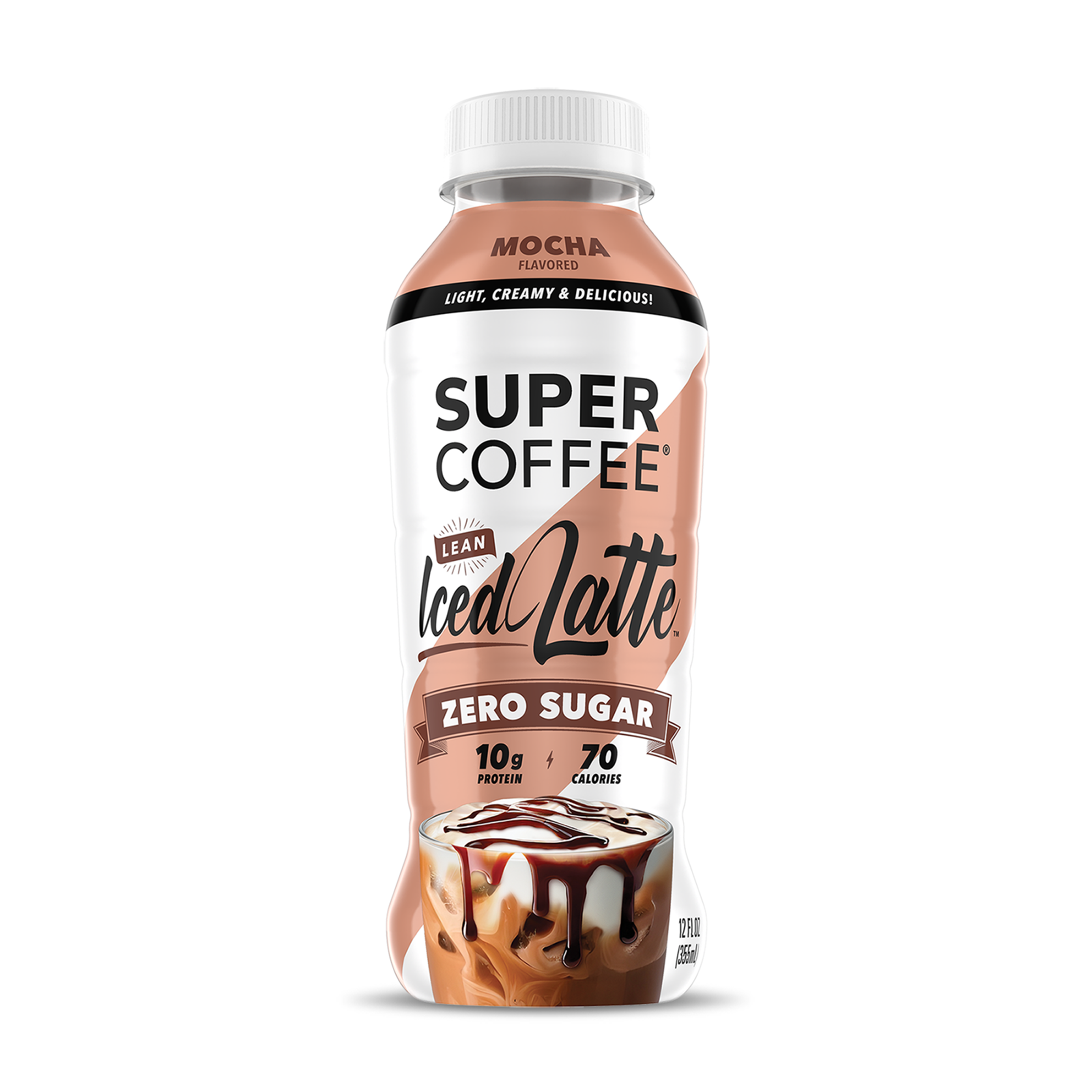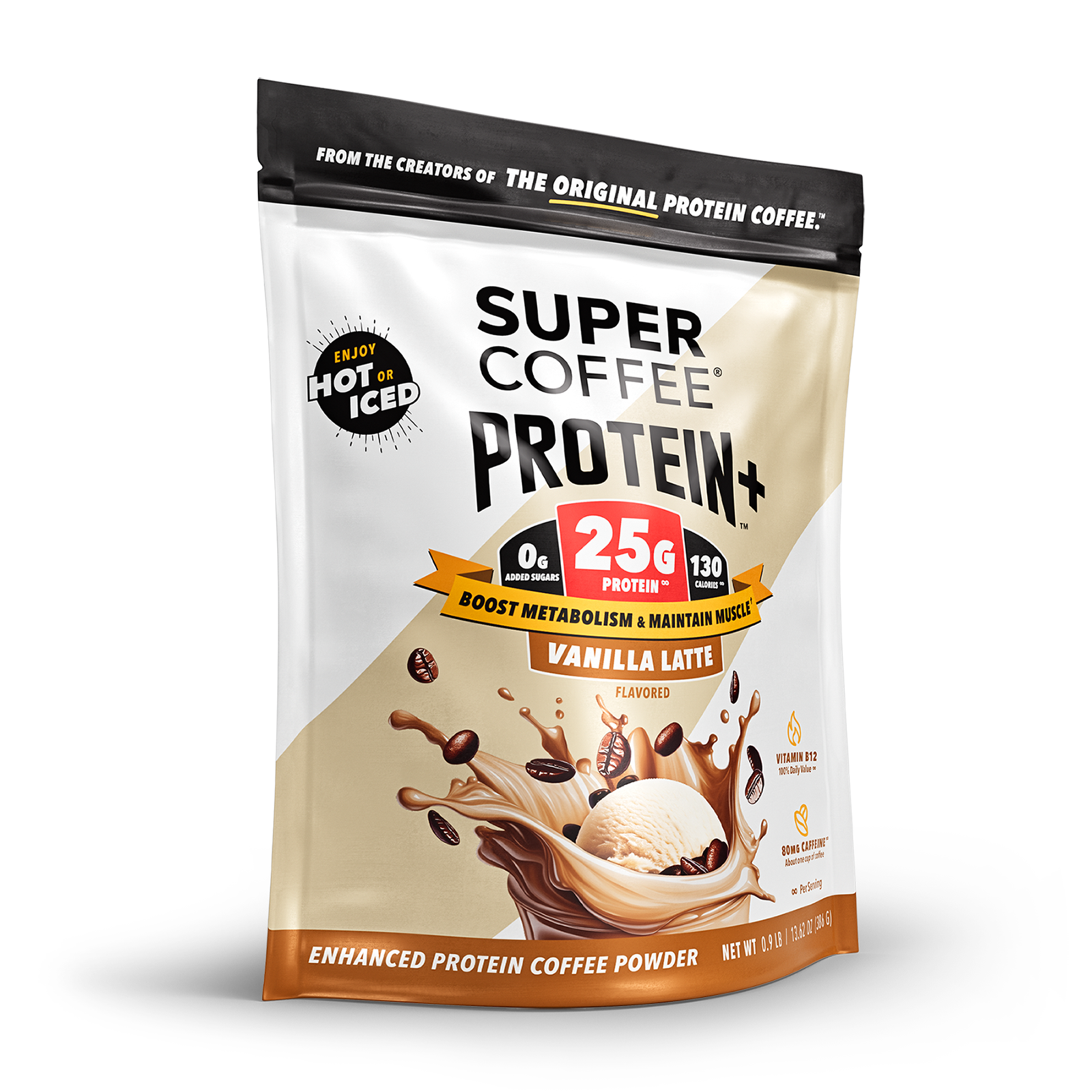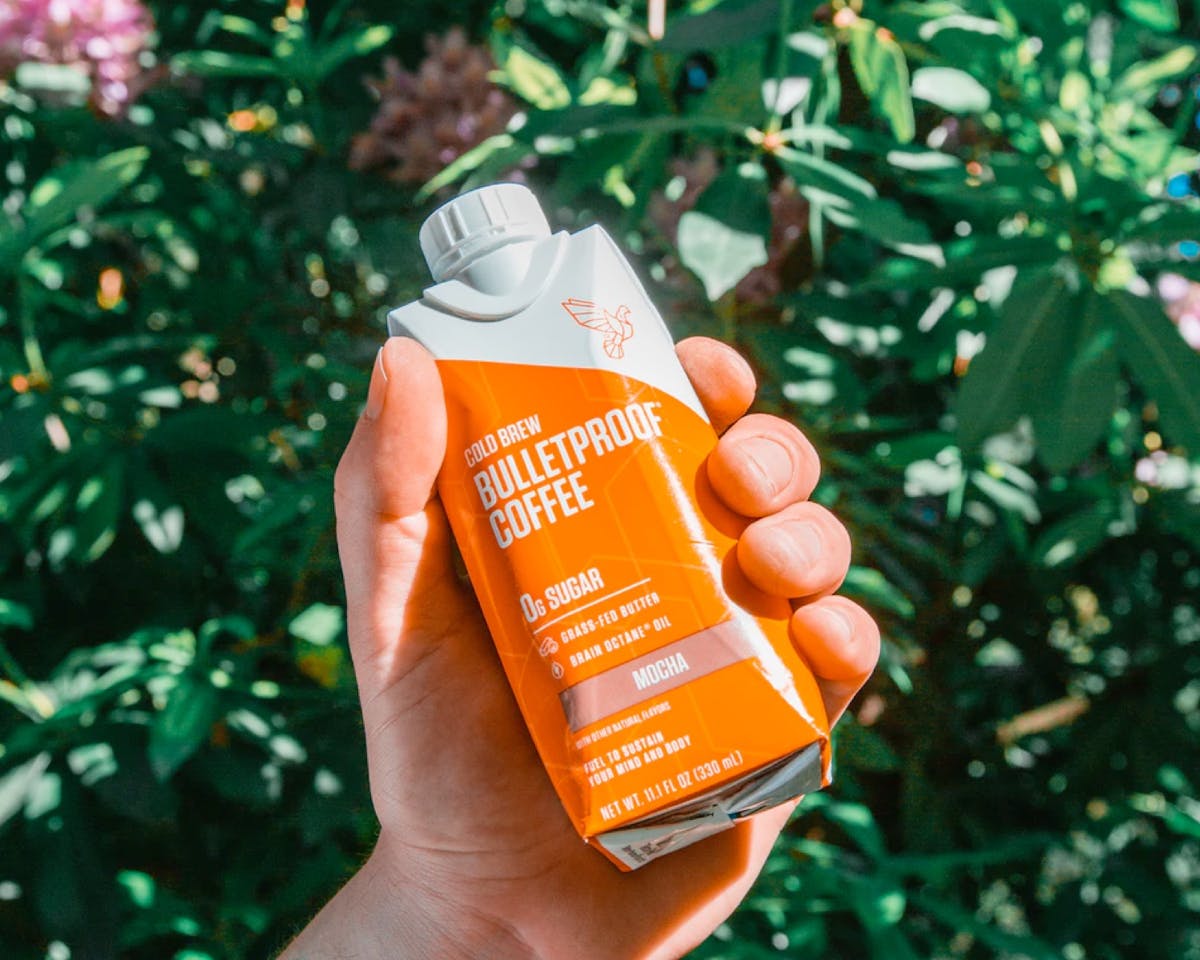Your cart is empty
In the 1960s, it was Tab. In the 1970s, it was Long Island Iced Tea. In the 1980s, it was wine coolers. In the 1990s, it was Jolt Cola. In the 2000s, it was the Cosmo.
Every era has a beverage that seemingly springs from nowhere and becomes a sensation – for a short time. Eventually, all of those beverages become “just another drink” or the answer to a trivia question.
The most recent fad? Bulletproof coffee.
When you think about it, no one could have imagined that a mix of vodka, gin, tequila, rum, triple sec and coke would become one of the hottest drinks of the 70s.
And until recently, it would have been just as crazy to think that mixing black coffee, butter and a virtually-unknown oil would create a beverage that would be touted by celebrities ranging from Halle Berry and Ed Sheeran, to Jeremy Piven and Jimmy Fallon.
So what’s the reason for the buzz surrounding bulletproof coffee? And why is it such a big deal for those who follow the keto diet?
The story begins in Tibet.
What is Bulletproof Coffee?
Or, to be honest, perhaps the story actually begins in Ethiopia.
The discovery that coffee provides a stimulant effect has been traced to either Yemen or Ethiopia. However, it was in Ethiopia, more than a thousand years ago, that people discovered a way to get a quick boost of energy on their arduous travels.
Here’s what they did. They mixed ground coffee with a form of clarified butter called ghee, which was a common food during the period. The mixture was easy to carry, easy to eat, and the caffeine made the long trips easier to handle.
Eventually, some Ethiopians began adding ghee, honey and salt to their brewed coffee on a regular basis. Independently, people in other regions of the world started doing much the same thing. So-called “butter coffee” became particularly popular in the Himalayan Mountains, where long and challenging treks were commonplace. So did “butter tea,” a morning beverage that remains a staple of diets in Tibet.
Ah, we’ve finally made it to Tibet.
That’s where a businessman named Dave Asprey first tried tea made with yak butter, in the mid-2000s. He was exhausted from trekking in Tibet, and says he was impressed by the energy and mental clarity that the tea provided.
Asprey returned home and published a butter coffee recipe on his personal blog. That recipe, leaning heavily on Tibetan butter tea, would soon become the “bulletproof coffee” he trademarked and used to build a business empire. Today his website sells versions of ingredients used to make the coffee – known by many simply as “keto coffee” – along with coffee beans and various supplements.
That brings us to the primary reason that bulletproof coffee became a full-fledged phenomenon. Asprey’s marketing efforts coincided with the enormous surge of interest in low-carb diets like keto and paleo. And it was a marriage made in weight loss heaven.
What’s Keto Got to Do With It?
The connection between bulletproof coffee and the ketogenic diet doesn’t make much sense until you understand how restricting dietary carbohydrates can lead to weight loss.
So let’s explore that subject first.
Carbs are a crucial part of our diet, because the body burns them and turns them into glucose (what you may know as blood sugar). And glucose is the fuel that the body and brain use to function on a daily basis.
Why would the keto diet deliberately eliminate most of the carbs we eat every day?
The process is ingenious. A shortage of carbs forces the body to find an alternate source of energy. When it doesn’t have enough carbs to make glucose, the body enters an “emergency” metabolic state known as ketosis. And in ketosis, the liver produces a substitute energy source called ketone bodies (commonly called ketones).
Ketones are a perfectly acceptable replacement for glucose. In some ways, the brain prefers ketones to glucose. So the switch to a state of ketosis doesn’t hurt the body’s daily functioning in any way.
What’s most important, though, is how the body produces ketones: it burns stored body fat. And we probably don’t have to tell you the implications of fat burning; it’s the fastest way to lose weight.
In short, drastically limiting carb intake leads to weight loss – because the body is forced to burn fat to produce ketones.
The keto diet requires vigilance, though. There’s a strict limit to how many carbs a keto dieter can eat each day, and a single mistake can be costly. As soon as the dieter consumes enough carbohydrates for the body to make glucose, it doesn’t need ketones anymore. As a result, the dieter “falls out of ketosis,” weight loss stops, and the process has to begin all over again.
Carb limits on keto – a total of 20-25 net carbs per day on a strict keto diet – can be difficult to handle. Most of the foods we eat every day, except for proteins, contain carbohydrates. And for the most part, they contain a lot of carbs. Grains like bread and pasta, sugar and foods that contain it (including most processed and packaged foods), milk (lactose is another term for milk sugar) and even most fruits (which contain fructose, or fruit sugar) are all off-limits.
When carbs are virtually eliminated from the diet, they have to be replaced by other macronutrients. On keto, that means eating more high-quality protein – and lots and lots of healthy fats.
We’ve now identified the two key takeaways to remember from this discussion: ketones and healthy fats. They’ll factor greatly into our discussion of bulletproof coffee.
So What Is Bulletproof Coffee, Anyway?
Dave Asprey’s concoction sounds odd, to put it mildly. However, there really is a method to the madness. More specifically, there are physiological reasons that make a great deal of sense.
Bulletproof coffee (or as many call it, keto coffee) has three basic ingredients: hot coffee, MCT oil, and either grass-fed butter or ghee. The butter (or ghee), you’ll recall, dates all the way back to the traditional butter coffee they drank in Ethiopia and the Himalayas. MCT oil, on the other hand, is a newer addition. So let’s learn about that one first.
What Is MCT Oil?
MCT stands for “medium-chain triglyceride,” and the scary-sounding name is nothing more than the description of a fat’s chemical makeup.
Fat molecules are composed of fatty acids and carbon atoms. Fatty acids are normally found in groups of three (thus, the “tri” in triglycerides). The groups of fatty acids are linked together – in a chain – with carbon atoms (explaining “chain” in the name).
Most of the fats we eat every day are chained together with at least 12 carbon atoms. They’re known as long-chain triglycerides, or LCTs. But a few dietary fats have only 6-12 carbon atoms. Those are medium-chain triglycerides, or MCTs.
Why is all of that scientific gobbledygook important?
There’s one simple reason. LCTs are more complex, because they’re longer. It takes a while for them to be digested in the gastrointestinal system before they can be used. On the other hand, MCTs are so much smaller that they don’t even have to be digested. After they’re consumed, they go straight to the liver.
Hopefully, a light bulb went on when we mentioned the liver. If not, remember that the liver is where ketones are produced when the body is in ketosis. And that’s the final piece of the puzzle: when the liver breaks down MCTs, it produces ketones – the same molecules the body uses for energy during ketosis.
That’s why MCTs are so helpful when you’re on the keto diet. When they’re turned into ketones they not only provide the body with additional energy, but they also make it easier to stay in ketosis.
Unfortunately, there are very few MCTs in the normal human diet. They only occur naturally in a few foods: coconut, palm kernels, and some dairy products. And all of those foods also contain LCTs; even when you eat them, you don’t get enough MCTs to make much of a difference.
The only realistic way to consume medium-chain triglycerides is via concentrated MCT oil. Manufacturers start with coconut oil or palm kernel oil, which contain both LCTs and MCTs. They then use a process called fractionalization to extract just the MCTs to create pure MCT oil. (MCTs can’t be extracted from dairy products.)
MCT oil is available in health food stores, some supermarkets and on Amazon. Asprey even sells it under the name “Brain Octane Oil,” because MCTs apparently provide some cognitive benefits as well. We’ll talk more about the oil’s other health benefits shortly.
Grass-Fed Butter or Ghee
Keto is usually described as a low-carb diet. But as we’ve mentioned, it’s a high-fat diet as well. Ghee and butter (preferably unsalted butter) are great sources of healthy fat, and mixing either of them into a cup of coffee is an easy way to get extra fat into a keto diet.
Why is grass-fed butter specified in bulletproof coffee recipes? Simply because it’s healthier. It’s higher in vitamins like B, D and K2, omega-3 fatty acids, and beta carotene. Don’t be discouraged, though, if you don’t have any on hand or can’t afford to pay more in the organic foods section. Regular butter will work just as well in keto coffee.
How to Make Bulletproof Coffee
The lengthy explanation we’ve just finished might make it seem that making keto coffee is difficult. In truth, it’s a snap.
You simply combine a cup of hot coffee, 1-2 teaspoons of MCT oil, 1-2 tablespoons of the butter or ghee – and blend for 30 seconds. Don’t skip that last step; since coffee is made with water, it won’t naturally mix with oil. Use a blender or a milk frother until the mixture has the consistency of a latte, and you’ve made yourself a cup of bulletproof coffee.
Some people enjoy the taste of keto coffee and others get used to it quickly. But if it’s not what you expect from your morning coffee, you can do a number of things to spice it up.
Because you’re on keto you can’t add milk, but you can certainly add heavy cream or a keto coffee creamer. You can’t add sugar, but there’s nothing wrong with a zero-carb natural sweetener like monk fruit extract or stevia.
There are plenty of other keto-friendly ingredients that will add a twist to your bulletproof coffee: high-quality cocoa powder, cinnamon or ginger, vanilla extract – even pumpkin puree, if you want to imagine you’re having a seasonal fall drink at Starbucks. Some also add protein powder, or supplements like collagen powder or Chaga mushroom powder for their additional health benefits.
Health Benefits of Bulletproof Coffee
Plenty of people drink bulletproof coffee every morning without giving a thought to the health implications. There are some to consider, though.
And thankfully, there are many more pros than cons.
Most of the health and wellness benefits are due to the use of MCT oil, which many people – not all of whom are on keto – consume regularly in their beverages, salad dressings and sauces, or right from the bottle.
Research has shown that MCT oil can apparently:
- Help improve cholesterol levels and boost heart health.
- Provide the body with important antioxidants and help fight inflammation.
- Help fight difficult-to-control bacterial and fungal infections.
- Work to control insulin resistance, a major factor in the development of type 2 diabetes.
- Help diabetics maintain healthy blood glucose levels.
- Boost brain function and help treat cognitive disorders like Alzheimer’s disease.
- Improve workout stamina and performance while boosting energy levels.
It’s not just the MCT oil, though; coffee provides its own health benefits. Studies show that coffee drinkers appear to have a lower risk of diabetes, heart disease, Alzheimer’s and Parkinson’s diseases, liver cirrhosis, and several types of cancer. And one often-cited study reported that moderate coffee drinkers (3-4 cups per day) reduced their risk of dying by 8-15%.
Sounds great, but you knew there had to be at least some bad news, right?
To be fair, it’s not really bad news. It’s simply a caution.
Bulletproof coffee, because of its butter or ghee, contains a ton of saturated fat. If you use two tablespoons of butter, you’re adding about 14 grams of saturated fat to your coffee – and the American Heart Association warns that you should only consume 13 grams in an entire day.
Keto coffee also contains about 450 calories per cup, and healthcare experts agree that a healthy adult should consume a total of about 2000 calories per day. 450 calories is manageable under those guidelines, but if you adopt a “bulletproof diet” that includes a number of keto coffees per day, you’re asking for trouble.
One related note: because keto coffee is so filling, some keto dieters (or those who are doing intermittent fasting) simply drink one each morning instead of having breakfast. That’s a bad idea, since breakfast should contribute a lot of the protein and nutrients you need each day when you’re on keto. Bulletproof coffee is a beverage; it shouldn’t be a “replacement meal.”
Instead of Bulletproof Coffee…
There’s a very good alternative you can choose instead. Super Coffee is a ready-to-drink keto-friendly beverage very similar to keto coffee. It’s low-carb, it’s sugar-free (with monk fruit extract used as a sweetener), it’s all-natural, it’s gluten-free, it contains added protein – and it contains the same MCT oil that’s the most important ingredient in bulletproof coffee.
Super Coffee is available in seven natural flavors like mocha and French vanilla, and there are espresso and cold brew versions as well. It doesn’t provide the healthy fat you can get from keto coffee – but it’s a great way to get the benefits of “going bulletproof” without all of that saturated fat.
Blog posts
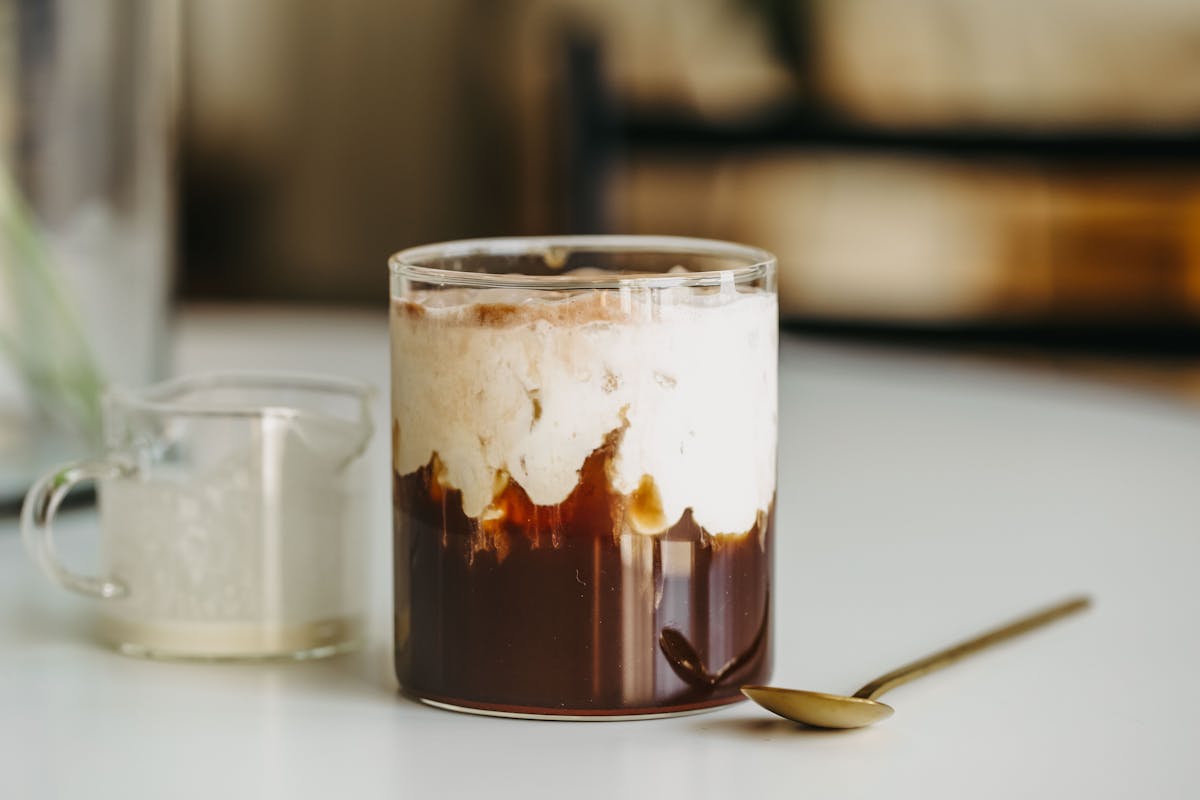
Cold, creamy and delicious - This chocolatey cold brew recipe is the perfect treat to kickstart your morning! The Recipe Chocolate Cream Cold Brew Prep Time: 1 minutes Cook Time: 5 minutes Ingre...
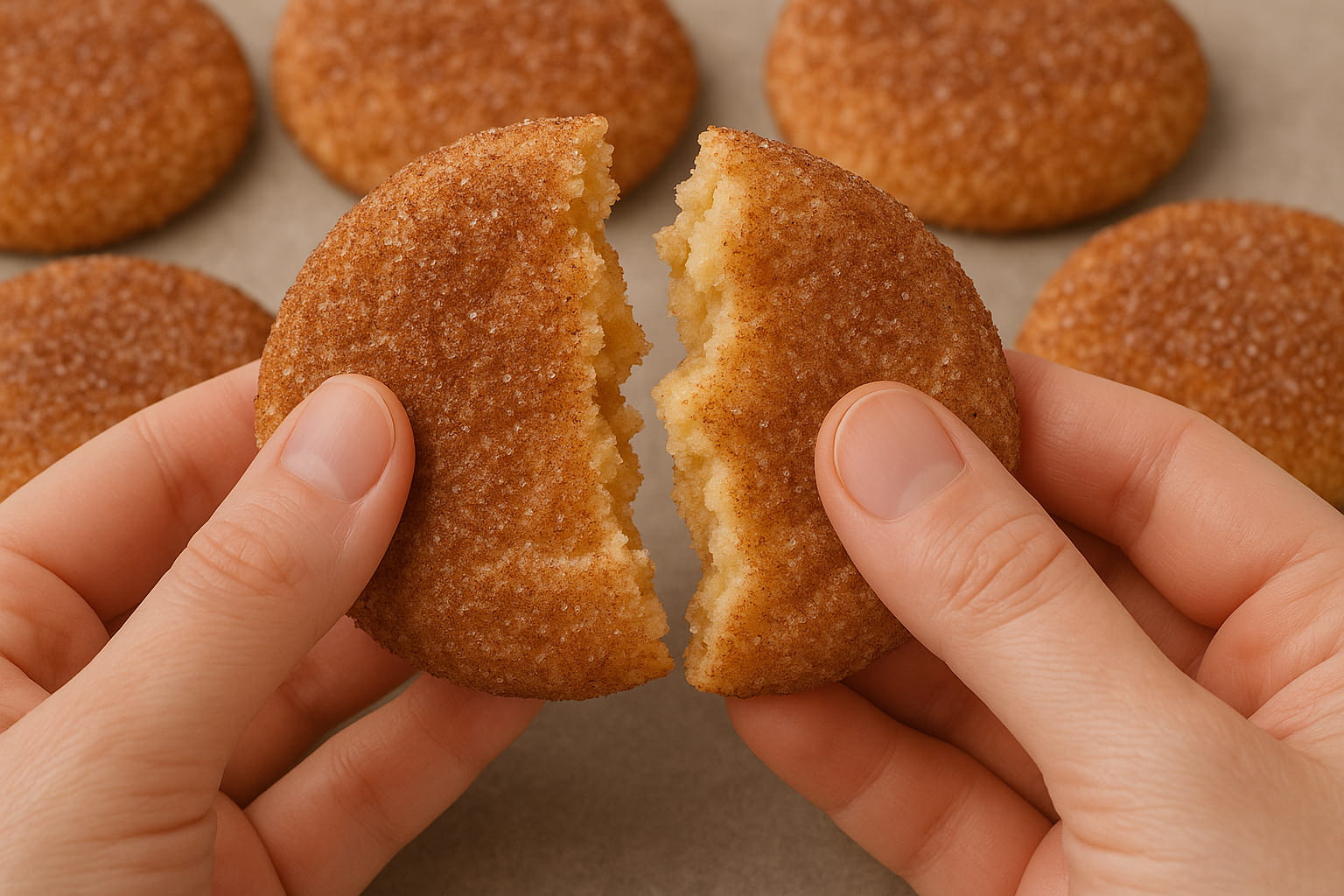
Indulge in the warm embrace of autumn with Pumpkin Spice Snickerdoodles - soft, spiced, and utterly irresistible! The Recipe Pumpkin Spice Snickerdoodles Prep Time: 10 minutes Cook Time: 1 hour ...
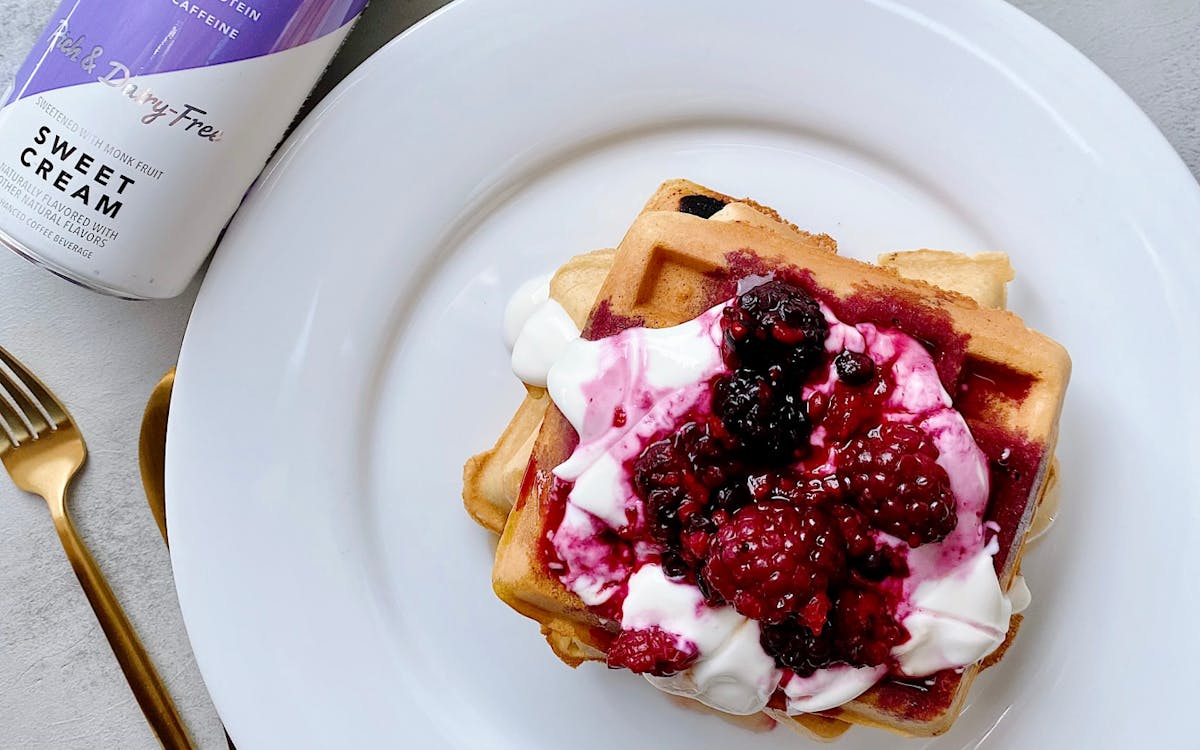
Low Carb Berries & Cream Waffles
These low carb/low sugar waffles are delicious, wonderfully crispy on the outside, and fluffy on the inside. You can also double batch and freeze for easy weekday breakfasts. Featuring our almost-...
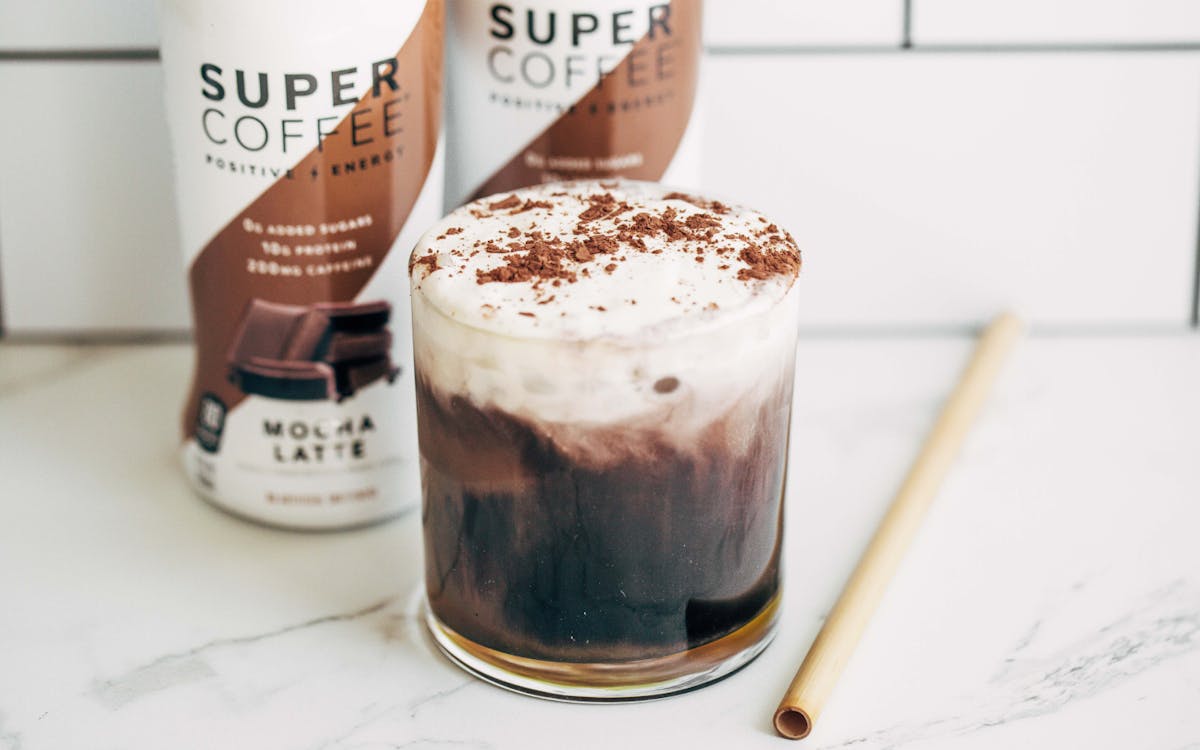
This may be the most fun latte recipe we’ve tried yet! With gooey & decadent black chocolate drizzle and a thick layer of creamy French Vanilla, just one sip of this iced latte will transport ...
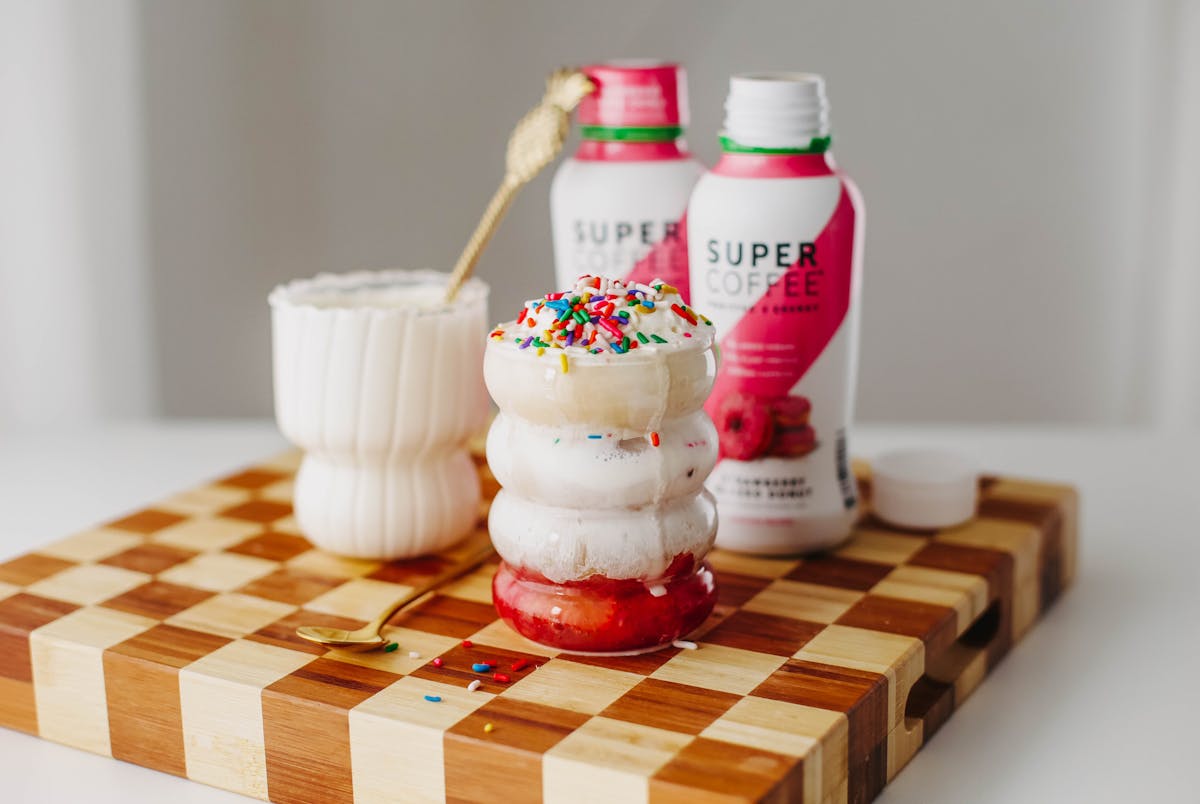
Strawberry Sprinkle Keto Coffee Recipe
Nutritional Info Calories: 274 Fat: 26.7g Carbs: 5.7g Protein: 4.5g Sugar: 2.1g Ingredients 3 strawberries, sliced. 3-4 tbsp heavy cream or half & half. Enough ice to fill a glass. 1/2 cup S...
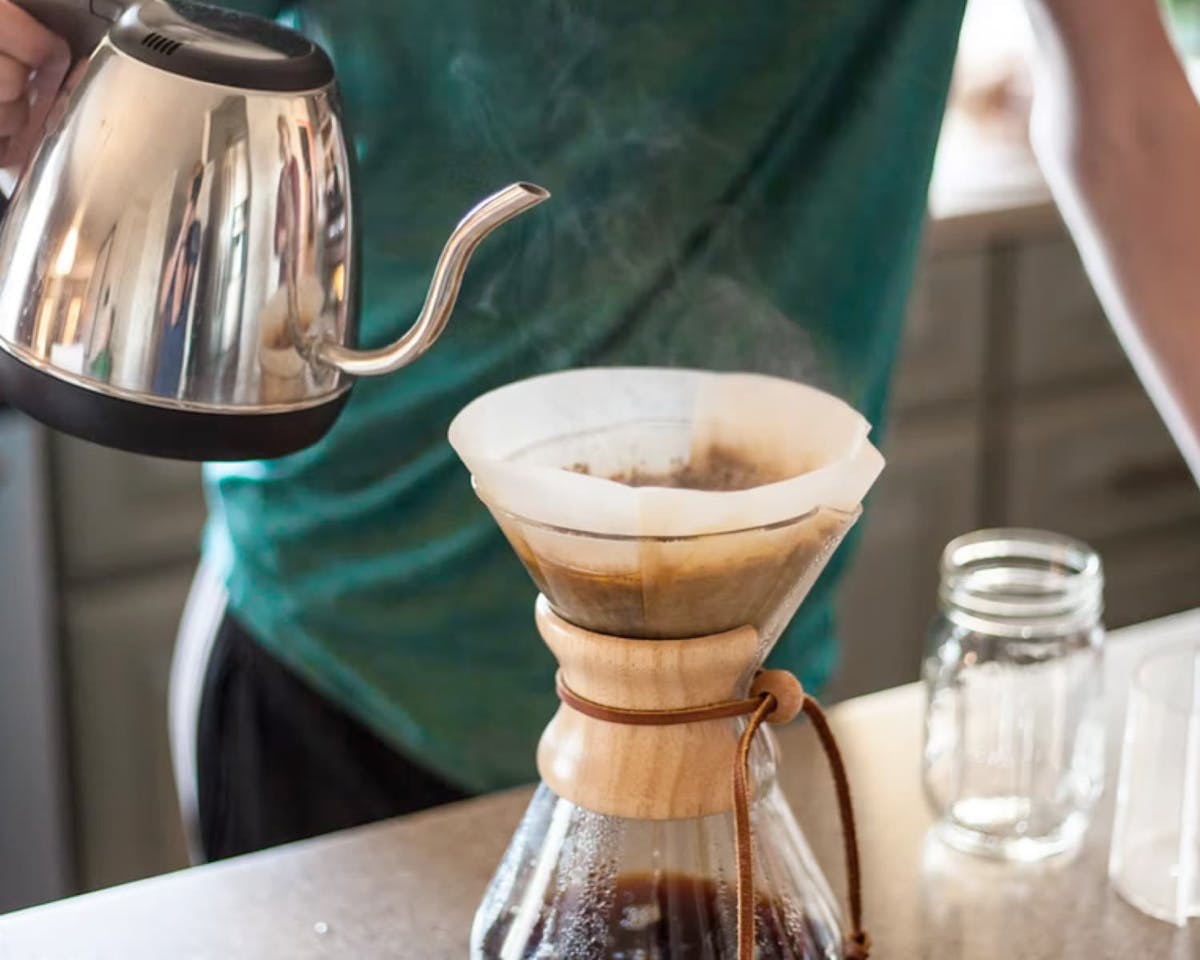
8 Healthy Coffee Recipes That Are Better Than Starbucks
There’s no question about it. Coffee is good for you. Those who don’t like black coffee, of course, commonly add milk, cream and sugar – even if that also means adding calories, fat or carbs to the...



